
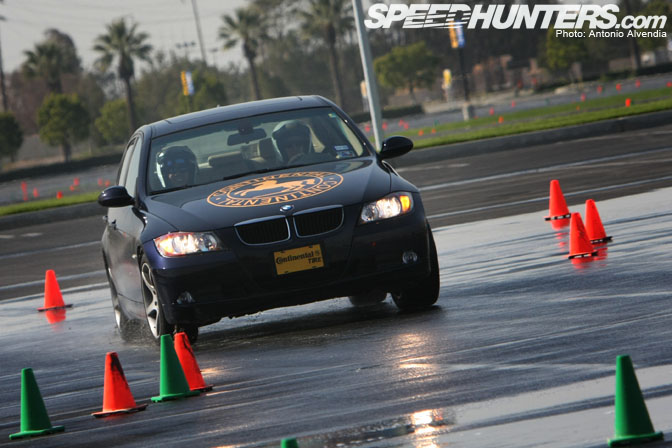
This week, many motoring journalists were given the opportunity to get out of the office and have fun on the race track, thanks to Continental Tires. Continental just came out with two all-new high performance tires, the Continental Extreme Contact DW (high performance, dry weather tire) and the Continental Extreme Contact DWS (high performance, all season tire).
The nice folks at Continental provided us with 3-series BMWs and Ford Mustangs so that we could try out the tires on dry and wet autocross tracks. Above, you can see how much fun the journalists were having as they tested out the DW and DWS tires on the wet tracks. After each group of journalists, a water truck drove through and continually dumped water on the track, making sure the pavement would be slippery and simulate real roads in wet weather conditions.
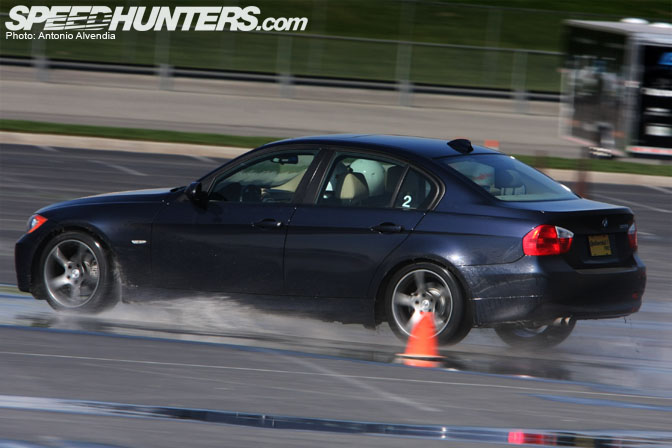
I was surprised at how much speed we were able to carry on this long autocross course. The above photo shows fellow journalists testing out the new Extreme Contact DWS tires at speed, while the car is leaning hard into a sweeping turn. I was surprised at how different the driving experience was when we tested BMWs with Continental DWS tires mounted on them, versus BMWs with other competitive brands mounted. The Continental DWS definitely exhibited a ton of grip in the wet conditions, even when the car was being driven very aggressively in hydroplaning conditions, like the one above.
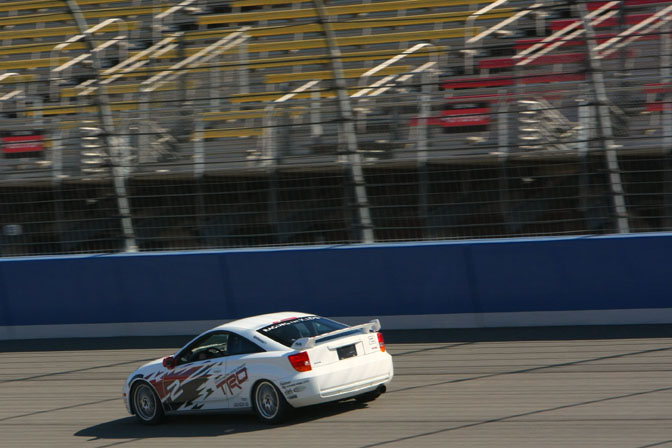
Shake… and bake! To show off how much grip their new Extreme Contact DW tires had at high speed, Continental arranged for journalists to have the opportunity to drive California Speedway's outer oval in Toyota Pro Celebrity Celicas from Danny McKeever's Fastlane Driving School. These were the same exact Celicas used in the Toyota Grand Prix of Long Beach celebrity races, and were 2ZZGE-powered GTS model Celicas, with 6 speed manual transmissions, rollcages, and open exhausts. The car I drove (this #2 Celica, shown here) had big mesh (BBS?) wheels with Continental DW tires mounted on them.
Driving 110-120mph on the outer oval at California Speedway was an extremely fun experience, but it was a bit nerve racking at times – a few times, I was driving bumper to bumper with another journalist, and the driver in front of me tapped the brakes at the wrong point (for no apparent reason) and proceeded to drive the wrong line, apexing way too early, coming off the banking early and then (even worse!) re-entering the banking too soon! I'm sure the instructor in that car was just as worried as I was. Be careful of unsafe drivers!
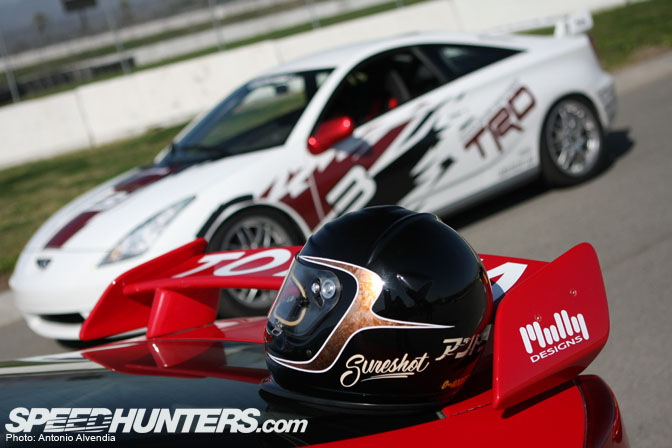
After having our fun, driving up to 120mph on the outer oval, we were given the opportunity to switch cars and drive the infield course for a time attack session. This was extremely fun for me, because this was the first time I had ever actually driven on the same course as used in the Redline Time Attack and the JGTC USA event at GT Live, which was way back in December of 2004.
For this session, I hopped into another Celica GTS with Continental DW tires mounted on it, and this is where the tires really impressed me. I was able to really push the GTS to the limit of the tire's lateral grip, cornering at high speeds. This is where the chamfered edges of the new DW tires come into play. Although I focused myself on running clean lines, using all of the racetrack surface with smooth steering and braking input, I did actually notice that the DWs were pretty smooth at high speed, and did exceptionally well in straight line braking, as tested at the end of the front straight.
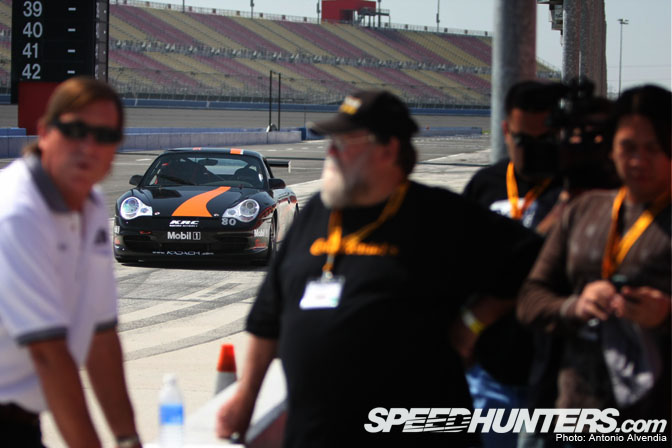
Before each driving session, the journalists were given a pep talk/driver's meeting by the instructors of Danny McKeever's Driving School. While everyone else was absorbing the instructor's information on how not to crash the car, I was distracted by something else that caught my eye… this lone Porsche, sitting by itself on the grid. I wanted to drive THAT car!
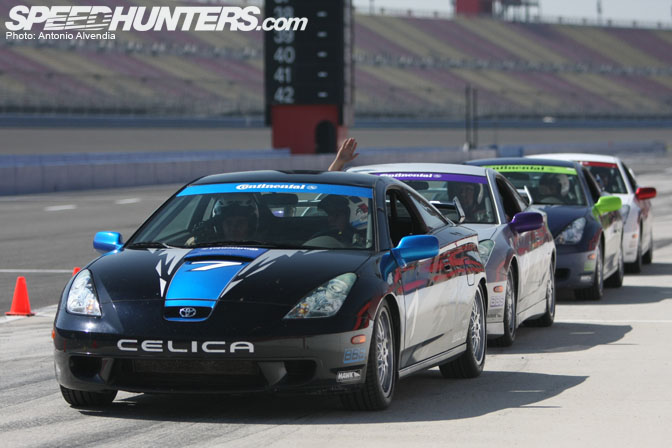
Here's a lineup of LBGP Toyota Celebrity Celicas, as they made their way off the track, and into the grid. There were all different types of Celicas there, driven by different celebrities at Long Beach. I was trying to find the car driven by Cameron Diaz, but unfortunately, no luck.
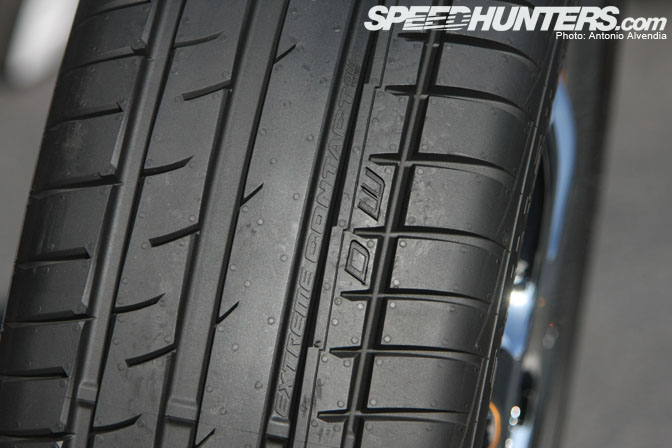
This is the tread pattern of the high performance Continental Extreme Contact DW. If you'll notice the D and the W embedded in the tread, those are actually tire wear indicators.
While the W is showing, the tread is optimized for wet handling. Once the W wears away, then the tire is only optimized for dry use. Once the D wears away, then the tire wear bars (see them, located next to the first E of the Extreme Contact logo in the middle) will most likely show up as well, letting you know it's time to replace your tires.
To explain some of the tire tread layout, the solid center rib that runs longitudinally through the tire is placed there for high speed performance and smoothness on the road. The lattitudinal (side-to-side) grooves, or siping on the edges of the tire work to evacuate water out the sides of the tire, to prevent hydroplaning and increase grip on wet surfaces.
A new innovation to the DW tires is the fact that it has chamfered edges on the corners of the tread blocks. This works similar to adding negative camber to a street car. Under heavy cornering, Continental engineers say that normal tire tread blocks twist, and the corner is what actually is making contact with the road. To increase the actual rubber contact patch under heavy cornering loads, the Continental engineers decided to chamfer the edges of these tread blocks. (In layman's English, it means they're cutting the corners of the tread blocks at a 45 degree angle, so that when the tire is under heavy cornering load, the car will still enjoy the maximum contact patch on the road.
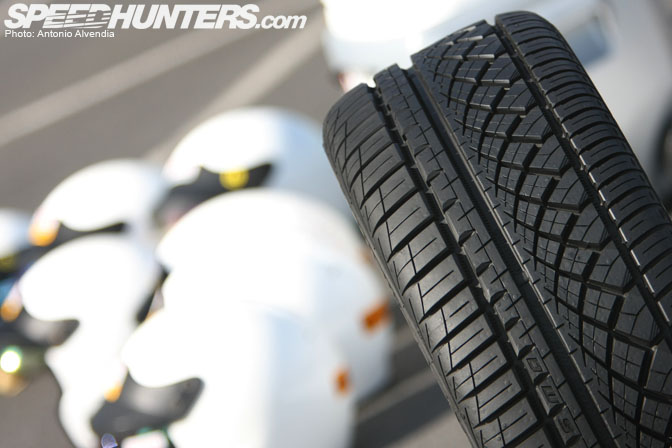
The Continental Extreme Contact DWS features much more grooves (voids) in the tread blocks, which allows for better evacuation of water, and better grip in snow. This is the all season, all weather version of the DW. Even though both tires are related, they actually have different rubber compounds. The DW (as seen in the above photo) uses a softer compound, and is optimized for dry handling performance. The DWS (as seen in the current photo) uses a slightly harder compound, and is optimized for streetability and all season/wet weather performance.

Aside from doing tire testing with real cars, Continental allowed us to break up the normal car stuff with a little fun at the Calspeed Karting track at California Speedway. This was super fun! It was probably the most fun event of the day, aside from doing the time attack on the infield. As usual, we began our session with a driver's meeting.
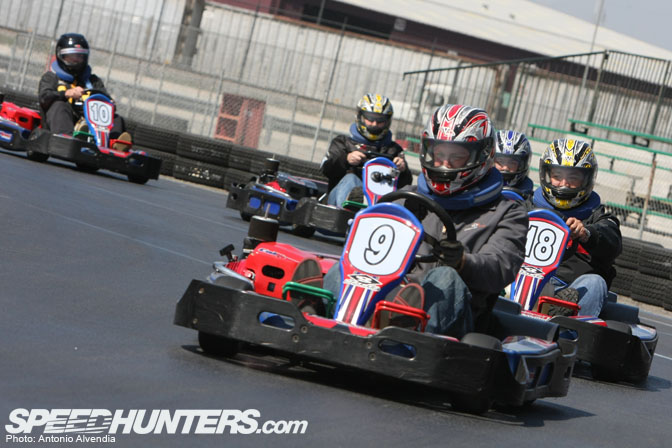
Once we got on track, we did a few lead-and-follow with one of the instructors, so that he could show us the line.
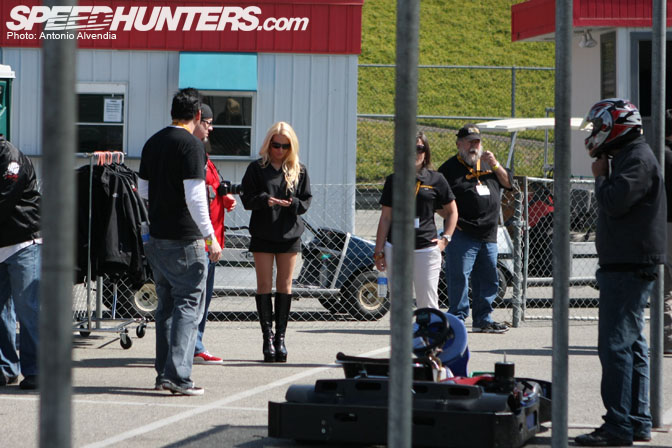
Continental had some models on hand at the event, accompanying some of the different groups to the different activities throughout the day. While I decided I would focus my efforts on having fun with the driving, it looked like some of the other journalists had fun talking to the models, like my new friends from Chevy High Performance Magazine, haha. On the right, the instructor already has his helmet on, and is standing next to his kart, telling the guys to hurry up and get their helmets on so we could go and drive!
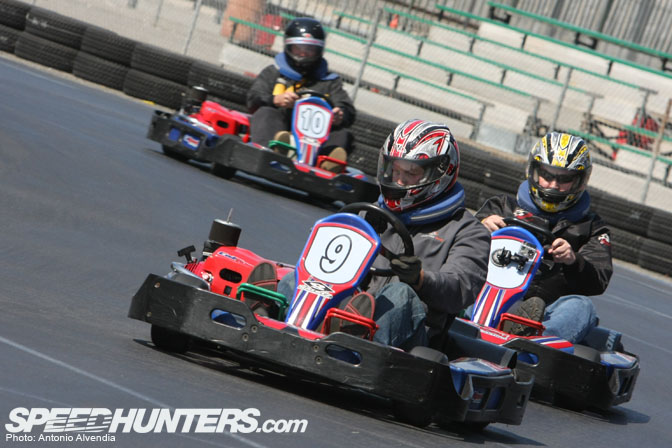
In case you were wondering, that is not a cupholder on the side of the go kart. It's an air filter.
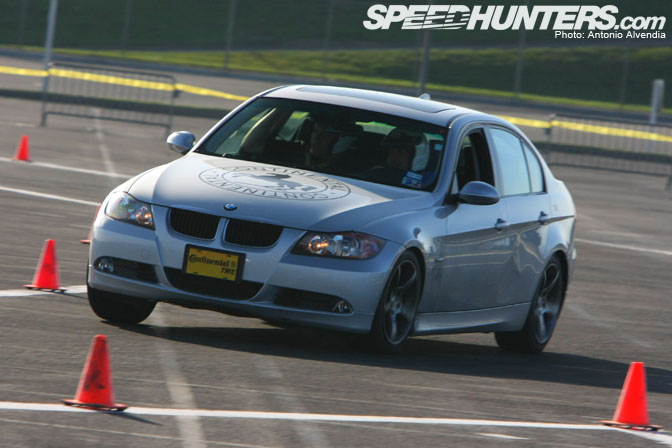
Later in the day, an engineer from Continental's facility in Germany took us all for a ride around a dry autocross course in a BMW 3-series with Conti DW tires. He was a very fast and precise driver. Speed and precision seem like traits shared with many top notch European drivers.
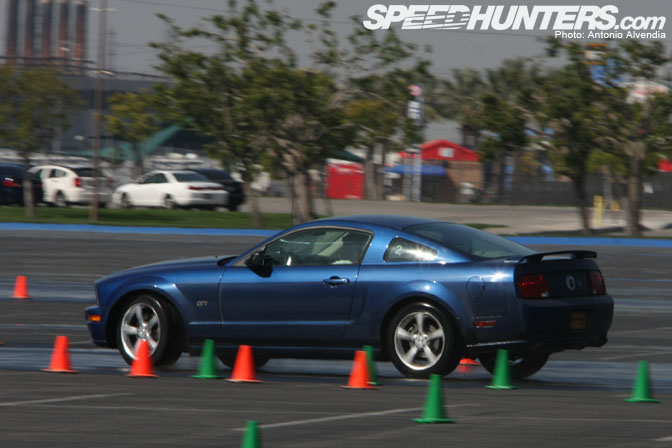
Continental also provided Ford Mustangs with automatic transmissions for the journalists to drive on wet and dry tracks, and a skidpad exercise for tire testing. After spending time driving a car with the driving finesse of a BMW 3-series, I was pretty disappointed when I got in the Mustangs and drove them in different exercises. I'm not talking about tires here, strictly the car.
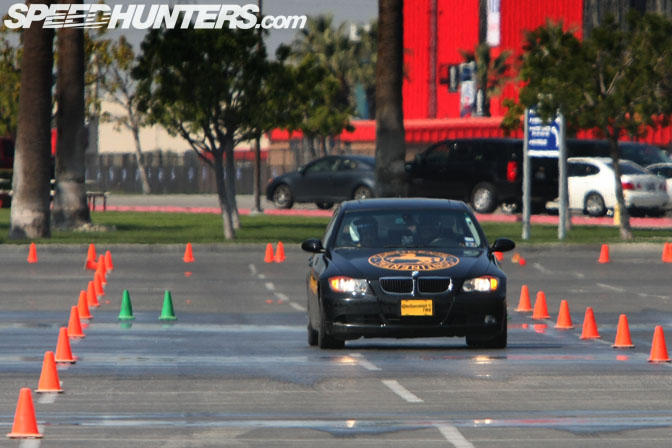
We also had the chance to use in-car performance meters to test the wet braking performance of the different competitive brands and the new Continental DW and DWS tires. This test consisted of hard acceleration off the start, and then hard braking in the wet zone once you drive past the green cones. We checked the windshield-mounted meter to find out which tires had the shortest stopping distances. In fact, we did this so much, my co-driver from Lowrider Magazine got sick, haha.
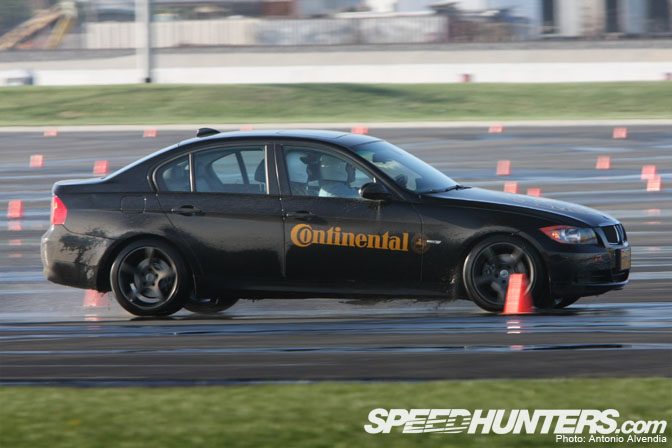
Here are some more wet handling tire tests being performed with a BMW 3-series. These new 3-series Bimmers seem like they would be absolutely fun to drive on a daily basis. No wonder guys like Andy Sapp in Atlanta choose 3 series BMWs for competitive drifting.
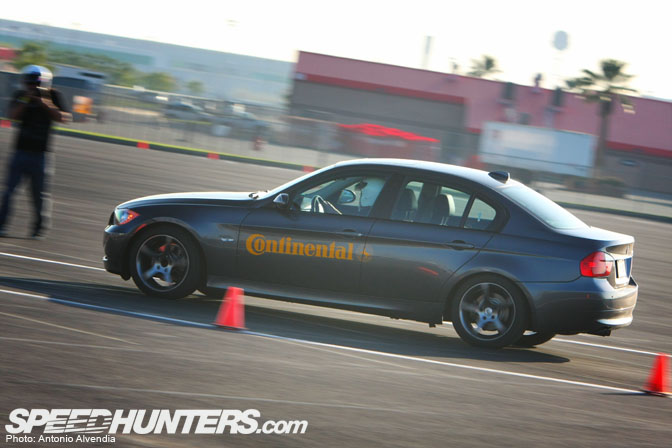
Thanks to Continental for introducing us to their new tires in such a fun way! I was really impressed at the wet weather handling of the DWS tires, and even more so when I tried out the DW tires for high performance applications. I can't wait to try out a set of DW tires at a track day with one of my personal cars. Since the car will be a constant, I'll be able to change just the tires and really feel the difference they make!
-Antonio Alvendia






good article Antonio! nice to see some Celicas still out in the wild ;D i've been eyeing a 2ZZ-GE machine for quite some time now (i know, sacrilege for a euro guy!)
hi blueslug! yeah man, those 2ZZGE Celicas are getting pretty inexpensive nowadays. I think it would be good for a daily driver, and you could get around town with no probs, especially with the VVTi and 2ZZGE. 2ZZGEs are great engines.
Nice. never really considered Continental tires before..
Word up!
DKsugq http://itrdqjggdavh.com/">itrdqjggdavh, [url=http://guqgcufbzoon.com/guqgcufbzoon/url], [link=http://rtibwslulovj.com/rtibwslulovj/link], http://yonjkhvgaxys.com/